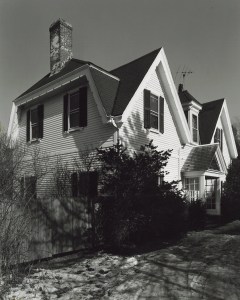When Susan B. Anthony visited Portsmouth in 1901, she went to visit Julia Ward Howe. What was extraordinary about that visit is that it probably would not have happened a dozen years before. Until I began to research the local suffragists, I was not aware that there were divisions among them. I will try to explain the differences between the various suffrage groups.
During the Civil War activists for women’s rights set aside their cause. As they took up their activities again, many of them sought to combine their cause of rights for women with rights for African Americans. The American Equal Rights Association was formed in 1866 with the rights of women and blacks as their cause. In November of 1868 there was a regional meeting in Boston of the Women’s Rights Convention. Some of those who participated in that meeting (Lucy Stone, Henry Blackwell, Isabella Beecher Hooker, Julia Ward Howe and T.W. Higginson) founded the New England Woman Suffrage Association (NEWSA). Julia Ward Howe was the first President. Frederick Douglass spoke at the first convention and said “the cause of the negro was more pressing than that of the woman’s.” Julia Ward Howe is recorded as saying at the convention that she would not demand suffrage for women until it was achieved for blacks.
This did not sit well with those who were more focused on the woman’s cause. In May of 1869 Elizabeth Cady Stanton and Susan B. Anthony and others formed the National Woman Suffrage Association (NWSA). To counter this organization, the executive board of the New England Woman Suffrage Association formed the American Woman Suffrage Association (AWSA) in November of 1869.
What were the goals of each group?
AWSA – Julia’s group – Headquarters in Boston
- Focus on the vote for women and largely ignored other women’s rights issues.
- Supported winning suffrage state by state instead of federal approach
- Supported the Republican Party
- Used a delegate system
- Men were full members and served as officers
- AWSA was the more conservative and larger group.
- Opposed confrontational strategies.
- Published “Woman’s Journal”
NWSA – Susan B. Anthony’s group – Headquarters in New York
- Advocated for range of reforms for equal rights for women – not just the vote. (Discrimination, pay issues, marriage and divorce laws).
- Condemned passage of 14th and 15th amendments unless woman’s suffrage was included.
- Female led group. All members were women although men could be affiliated.
- Sought a national, constitutional change to insure voting rights.
- Sought help from Democrats as well as Republicans.
- Had a “top-down” organization.
- Published – “The Revolution”
After the 15th Amendment was passed in 1870, voting rights for blacks was no longer an issue. In 1878 a woman suffrage amendment was proposed and Congress defeated it, so the NWSA began to use the state by state approach, too. Those active in woman suffrage were discouraged and tired of the divisions. There was little difference between the two groups at that time. Lucy Stone proposed at a AWSA convention that the organization should approach the NWSA and women in the two groups began to negotiate an alliance. In 1890 the two organizations merged into the National American Woman Suffrage Association.
Susan B. Anthony wrote to her sister. “I went in the carriage one afternoon to call on Julia Ward Howe, whose summer home is six miles from here; she was charming and I had an interesting time.” Two great leaders in the suffrage movement were meeting in Portsmouth through the efforts of Sarah Eddy. The woman’s suffrage cause was much stronger together than it had been divided.
Resources: I recommend the online articles by “ThoughtCo” on the various groups. This one is on AWSA, but there are others on NWSA and the American Equal Rights Association.
Lewis, Jone Johnson. “American Woman Suffrage Association.” ThoughtCo, Jun. 4, 2018, thoughtco.com/american-woman-suffrage-association-3530477









